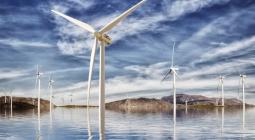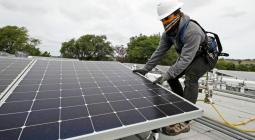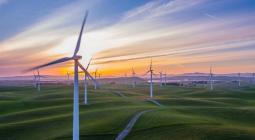5 Wind Energy Giants Embracing Solar Power.
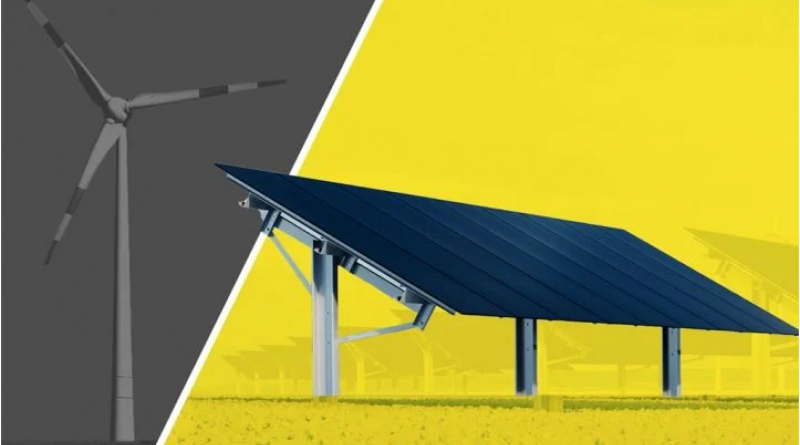
More heavyweight wind developers are betting big on solar. Here are five to watch in the decade ahead.
Onshore wind is now the leading renewable energy technology in the U.S., and it's still knocking competitors out of the way. Last year wind overtook hydropower in total generation, and 2020 is on track to be a record year for new wind farm construction.
But all other energy sources are losing ground to solar these days, wind included. Solar accounted for 40 percent of new U.S. generation capacity in 2019, its largest share in history. After 2020, solar's lead over wind will widen rapidly in the U.S. market, Wood Mackenzie forecasts.
Large-scale solar is already cost-competitive with wind in many states, and analysts believe solar has an easier path toward further cost reductions. In Texas, home to nearly one-third of the country’s 100 gigawatts of wind capacity, there’s now more solar than wind in the interconnection queue.
Falling costs, steady efficiency gains and federal incentives have thrust solar to the center of the strategic plans of many American energy companies. Unsurprisingly, a significant number of the country’s wind energy giants are turning their attention to solar.
There are key differences between wind and solar development, but much of the necessary expertise is translatable. Solar projects can often be sited closer to population centers and rely less frequently on tough-to-build transmission lines. The U.S. is on track to install nearly 15 gigawatts of wind farms this year, a new record, according to Wood Mackenzie data. But the market is expected to decline considerably through the mid-2020s; by 2025 the annual solar market could be several times as large as its wind counterpart.
There will still be some wind-only developers, but others will need to move toward solar “if they want to survive,” said Colin Smith, senior solar analyst at Wood Mackenzie. “There are absolutely going to be losers” as the market pivots, he said.
As the renewables market gets ready for this reshuffle, GTM has highlighted five major wind developers that are betting a big chunk of their future on solar.
EDF Renewables
France’s EDF started out in the wind business in the 1980s, entering the U.S. market in 2002 through the acquisition of enXco. But for more than a decade, the company has been watching closely as the cost of solar energy fell, said Ryan Pfaff, executive vice president of grid-scale power at California-based EDF Renewables North America.
In 2015, the company devised a five-year plan to move toward a more balanced portfolio. “You could see solar start to emerge as being more competitive and attractive to offtakers,” said Pfaff. “We want to supply the product that customers want. What many of them are looking for is the most competitively priced renewable megawatt-hour that we can provide to them.”
EDF’s development pipeline now skews toward solar; the company is targeting around 1.4 gigawatts of annual capacity additions in North America from 2021-2023, and 80 percent of those projects will be solar — many with batteries attached.
EDF has no plans to cut wind from its portfolio. Through a joint venture with Shell New Energies known as Atlantic Shores, the company co-owns an offshore wind zone facing New Jersey that could hold 2.5 gigawatts. Wind can balance solar’s output and will remain competitively priced in many markets, especially where solar is already abundant, Pfaff said.
How EDF's resource mix looks beyond the mid-2020s will partially be left to how incentives shake out, Pfaff said. Though solar is now more economic than wind in many states, the recent extension of the federal Production Tax Credit for wind may boost that technology after the solar Investment Tax Credit dissolves.
“We see ourselves being active in wind all throughout the 2020s in the U.S.,” said Pfaff. “In terms of how the market size for onshore wind will evolve, it’s too early to tell beyond 2024, but we see light through the end of 2024 based on the tax credit extension.”
NextEra Energy
NextEra has long been the U.S. wind market's leader. It owns more wind capacity than any other American company by a wide margin, and it once again ranked as the market’s leading developer of new projects in 2019.
These days, however, NextEra is nearly as formidable on the solar side — and solar may soon eclipse wind in terms of the new projects the company brings online.
NextEra's installed solar fleet now totals more than 4 gigawatts, the largest outside of China, according to WoodMac. Last year the company pledged to invest in 30 million solar panels by 2030 — more than 10 gigawatts — to serve customers of its subsidiary utility Florida Power & Light.
"This plan reflects our belief that renewable generation, and particularly solar paired with battery storage in Florida, is an increasingly cost-effective form of generation in most parts of the U.S.," CFO Rebecca Kujawa said on the company's recent earnings call.
For 2021-2022, NextEra Energy Resources has already signed nearly 3 gigawatts of solar contracts, and that could grow to 4.8 gigawatts. By comparison, the company expects wind deals amounting to 2 gigawatts to 3.8 gigawatts during that same period.
The developer is eyeing ways to add batteries to its existing solar projects and plans to spend $1 billion on energy storage projects in 2021.
NextEra increasingly views storage "as an important standalone business in its own right," says CEO James Robo.
Invenergy
Two weeks ago, Invenergy, long a wind-development powerhouse, started operations at its largest-ever solar project, the 160-megawatt Southern Oak array in Georgia.
The Chicago-based developer has started throwing its weight around in national solar policy struggles. After the Trump administration withdrew an exclusion on import tariffs for bifacial solar panels, Invenergy sued and won a ruling that allowed the exclusion to resume for a time. (Southern Oak is the second Invenergy solar project to use bifacial modules.)
Ted Romaine, senior vice president of origination, says Invenergy has been looking at solar since 2011 or 2012, when customers started demanding it. The company played an early role helping to catalyze Ontario's solar market.
Meanwhile, the company is also pushing ahead with its traditionally preferred resource, including a 380-megawatt wind project in New York and a 500-megawatt project in Wyoming.
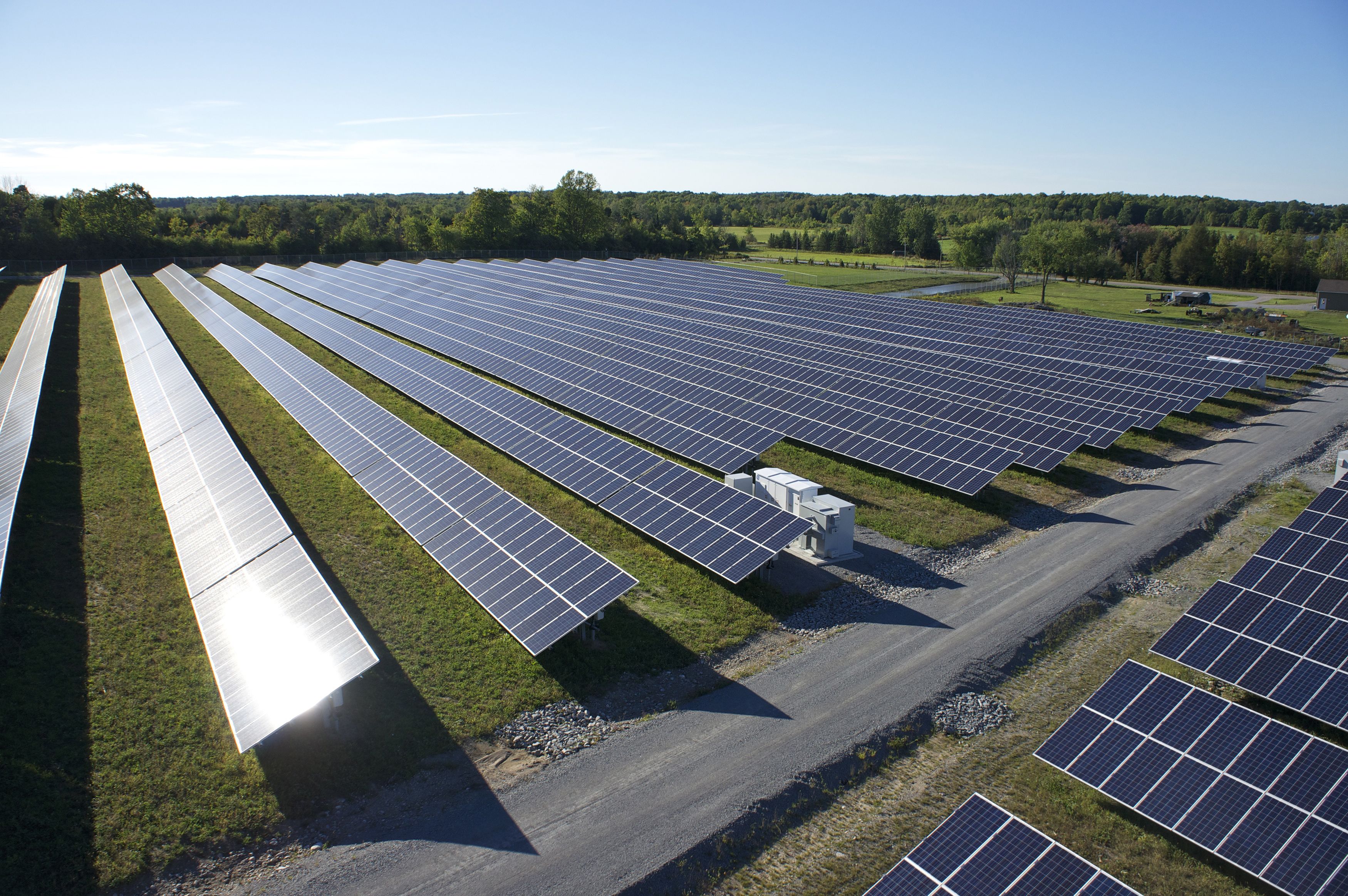
“Wind definitely has a place in the future,” said Romaine. “We view wind and solar as complementary to each other.” How the mix plays out for Invenergy will depend on state and federal incentives as well as geography, permitting and customer demand, he said.
Avangrid
Avangrid, a utility and renewables developer majority-owned by Spanish wind giant Iberdrola, was a pioneer in the U.S. wind market (it was known as Iberdrola Renewables until 2017).
Onshore wind accounts for 87 percent of Avangrid's installed capacity today, and the company has staked out an early lead in the U.S. offshore wind market through its part in the 800-megawatt Vineyard Wind project off the coast of Massachusetts.
Compared to some of its closest rivals, Avangrid has been slower off the mark when it comes to solar: Though it is the country's third-largest wind operator, Avangrid owns just 130 megawatts of solar in the U.S. today.
But things are changing quickly. Avangrid is slated to complete 670 megawatts of solar projects this year and next. And the company tells GTM its pipeline of future solar projects now stands at 8.4 gigawatts, nearly as large as its on- and offshore pipelines wind put together.
“Demand for solar from utilities, municipalities, and commercial and industrial energy customers has grown significantly in recent years as the economics of the technology have become increasingly favorable,” spokesperson Morgan Pitts said.
Looking ahead, storage will be combined with “nearly all” solar requests for proposals. “There isn’t tension between any of the above technologies,” said Pitts. “Each makes sense for different customers in different geographies.”
Avangrid's solar ambitions are mirrored by those of its parent company. Iberdrola finished Europe's largest solar plant in January, part of a bigger plan to build 3 gigawatts of solar in Spain by 2022.
Ørsted
Denmark's Ørsted is virtually synonymous with offshore wind: The company is that technology's largest developer and operator globally, and that's also true in the burgeoning U.S. market.
Ørsted began expressing interest in other renewables markets a few years ago, and it acted on that interest through the acquisitions of U.S. developers Lincoln Clean Energy in 2018 and Coronal Energy in 2019, the latter of which focuses on solar and storage.
Last November Ørsted announced a 460-megawatt solar-plus-storage project in Texas' Permian Basin. The company said the project, due online in 2021, will make it the first in the U.S. to own the “full spectrum” of renewable technologies — onshore and offshore wind, solar PV and storage. (After all, there's only one U.S. offshore wind farm in operation today, and Ørsted owns it.)
But it will not be the last developer to run the gamut. Dominion Energy is about to finish a 12-megawatt offshore wind pilot and plans to finish four battery storage pilots in early 2021. Before long, others will be banging on the door of the "full spectrum" renewables club.
19 May 2020
gtm

